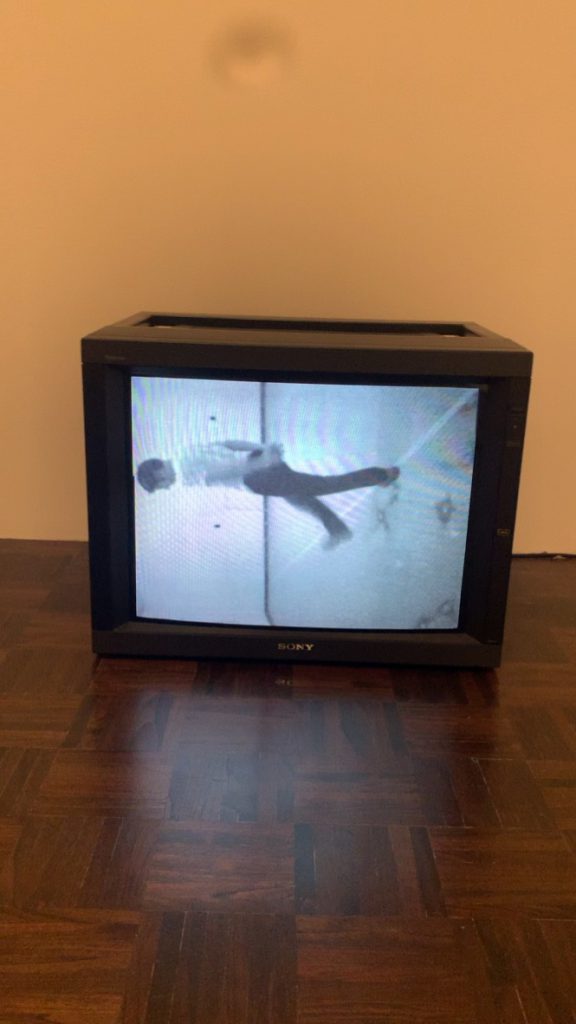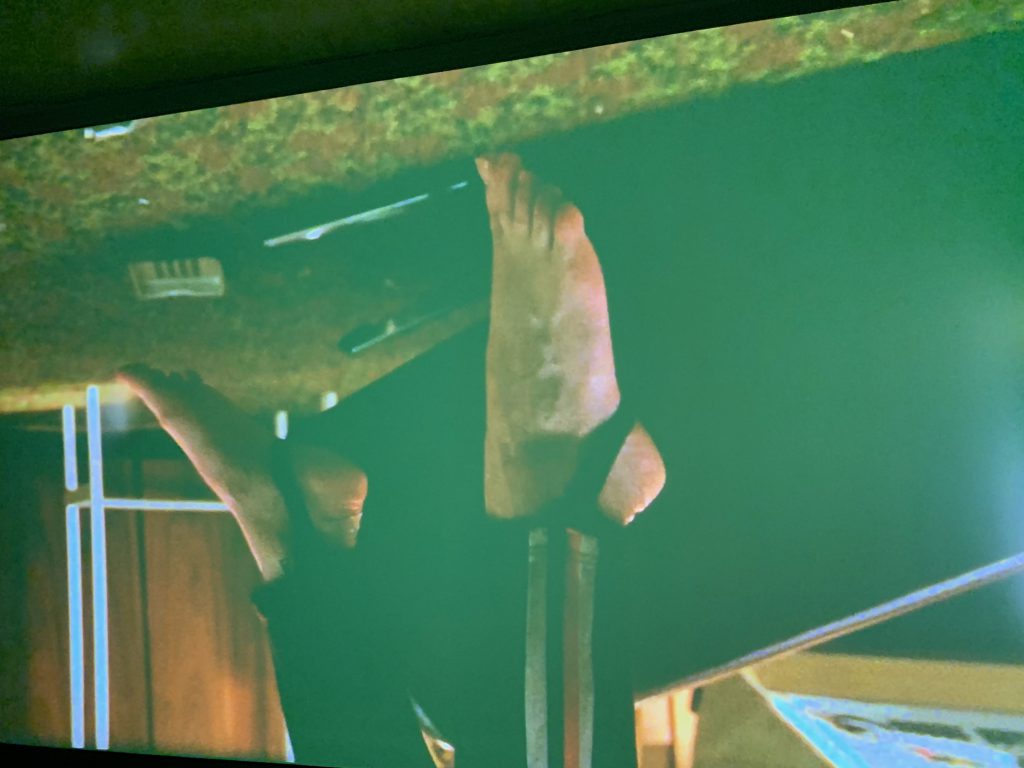One piece I was able to see at the Metropolitan Museum of Art Bruer location on 76th street and Madison Avenue was, “Slow Angle Walk (Beckett Walk 1968) by Bruce Nauman. A fixed camera records Nauman as he repeats the same sequence of gestures: after kicking one leg up at a right angle, he pivots 45 degrees, letting his leg drop with a thump while extending his back leg at a right angle. According to the description on the wall next to this film, “These absurd motions take inspiration from the writings of Irish author Samuel Beckett, who described his characters’ awkward movements in excruciating detail.”
At certain moments, Bruce Nauman moves totally out of shot and only the noise of his footsteps indicate his presence. This way of treating his body with detachment through fragmentation and moving out of shot is reinforced by the perceptive confusion and the impression of weightlessness produced by the inverted space. In Slow Angle Walk (Beckett Walk), the spectators are confronted by a feeling of alienation which they experience while watching the artist in the doubly enclosed space of the screen and his studio.
Nauman abandoned painting for a wide ranging investigation of his own body as subject and object of his work, from latex and wax casting of body parts to a series of twenty-five films and videos.
In these latter works, the artist executed mundane activities in his studio – from walking and jumping to bouncing balls – where he explored “the kinds of tension that arise when you try and balance and can’t.” Nauman knew this kind of stripped-down, non-narrative movement from his association with Ann Halprin’s Dance Theatre Workshop in San Francisco which he was a part of for a while.
Two things that stuck to me about this film was the dullness and the creative use of the body to make sounds.
When I first came up to this film, I thought it would pick up or change at some point, but after about 6 minutes of the same action, I finally decided to read the description where it said that he did multiple hour long videos of these types of videos, and practiced for many hours at a time until it was perfect. The intent wasn’t for the videos to be watching in its entirety, but rather something you could come back to throughout your visit to the museum.
The creativity in this piece, to me, was very unique because people walk every day, yet I’ve never thought steps could be seen as an artsy part of the human body. Nauman was able to recognize that and use it to his advantage to explore this new avenue in the art world and create something different.
What I was able to take away from this film was sometimes you just have to think outside the box and let your imagination take over, especially if you’re an artist or something of the sort. Also, it goes to shows how art can be expressed in many different ways and doesn’t really have a definition or look.



